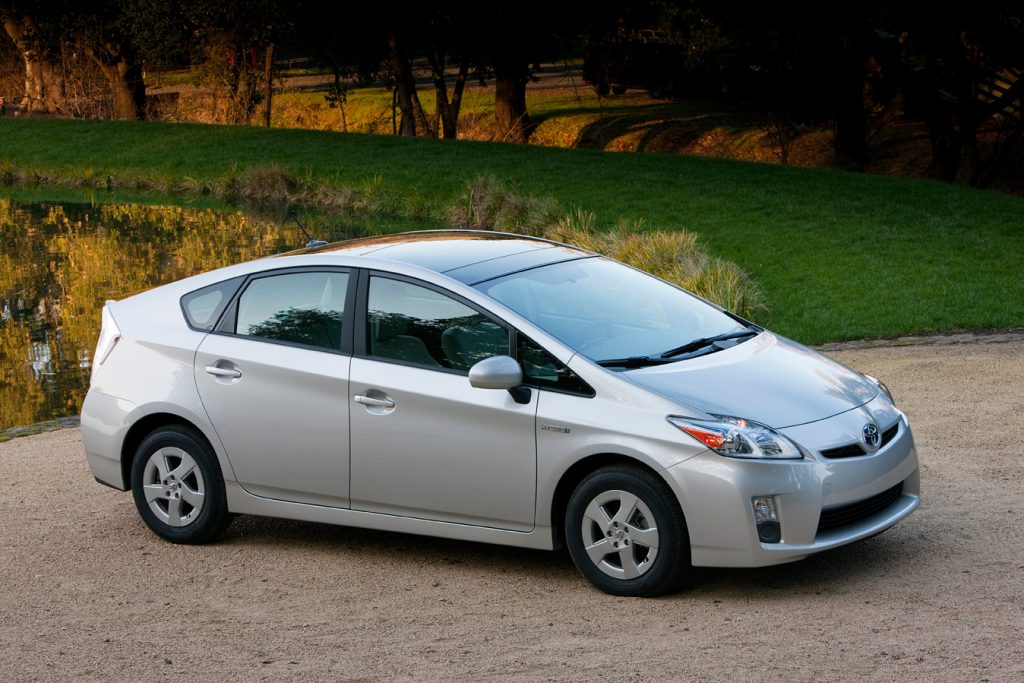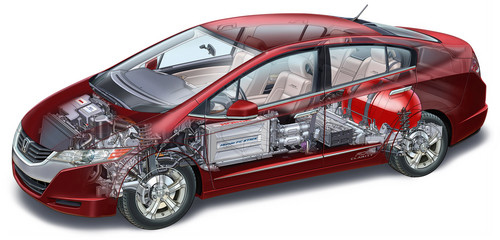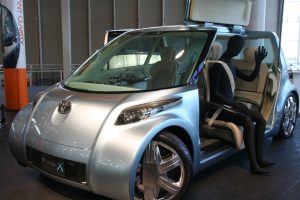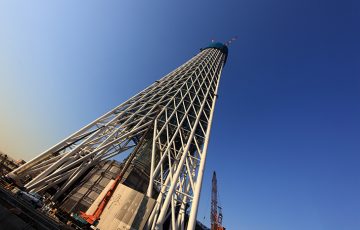Cruising Around for Ecologically-Friendly Cars
Everyone is told that Tokyo’s public transportation network is so efficient that people don’t need cars. But that’s what people who don’t drive say. The benefits of having a car in the city are myriad. When a destination requires train transfers, it can be much quicker to drive. When carrying passengers, even calculating in the cost of parking, driving can often be cheaper. Going to multiple destinations – especially with small children or heavy luggage – is infinitely easier by car. Our weekends are filled with delightful outings difficult to reach by public transportation. But driving almost daily, I do hanker for a more fuel-efficient vehicle than my Toyota mini-van. The array of so-called eco-friendly cars available can be mind-boggling. Think of this as The Dummies’ Guide to Eco-Cars in Japan.
What is an Eco-Car?
“Eco-car” is short for “ecologically-friendly car”, but its meaning can vary. Until September, the Japanese government had been providing a generous tax break and subsidy to owners of older cars to trade in for a selection of new, fuel-efficient models – not necessarily alternative energy cars. Certainly the ideal of emitting less harmful gas is attractive but savings much more so. The successful program worked well as an economic stimulus. Despite the end of the subsidy period, the unpredictable price of gasoline is making fuel-efficient cars extremely popular.
King Prius

Despite all the brake system troubles and negative press the Toyota Prius had the past year, it is still the world’s standard in eco-friendly cars. Its computerized brain decides on when to use electricity (in congested traffic), gasoline (when climbing hills) and when to use both (driving on highways.) Because of this hybrid technology, the Prius averages 38 km/litre – cutting fuel costs almost 40% while emitting less harmful gas. The Prius does not have the limited driving range of an electric car or the hassles of having to find alternative fueling stations.
What makes the Prius so popular is its versatility. With its sleek, futuristic design, a fully-loaded Prius G with leather seats is a luxury car priced at ¥3.3 million. Indeed, I know former BMW and Audi owners who have traded in their luxury European cars for a Prius. The unique hybrid technology appeals to male drivers and even upper-middle class wives rave about the savings in gasoline. A Prius comes with the bragging rights of being ecologically conscientious while still driving a prestigious car.
But the Prius also comes in a very reasonably priced model. The Prius S is more basic and comes with the price tag of around ¥2.2 million. Priced comparably to other compact cars with the appeal of savings in fuel, it’s no wonder why it’s a bestseller. But for a soccer mom like me who often has to lug around seven kids with sports equipment, the Prius is my car of choice – in about ten years.
Fossilization of natural gas vehicles
 While the Prius is the world’s best-selling hybrid car, its numbers are negligible to the amount of compressed natural gas (CNG) emitted by vehicles on the streets of many developing countries. Although it is still a fossil fuel, CNG is made of methane gas combined with other bio-materials, making it a cheaper and cleaner alternative than liquid petroleum. Worldwide, there were 11.2 million natural gas vehicles as of 2009, led by rapidly industrializing nations like Brazil and India where CNG fuel costs are about a third of petroleum. One major benefit of the CNG technology is that ordinary cars can be altered to run on CNG.
While the Prius is the world’s best-selling hybrid car, its numbers are negligible to the amount of compressed natural gas (CNG) emitted by vehicles on the streets of many developing countries. Although it is still a fossil fuel, CNG is made of methane gas combined with other bio-materials, making it a cheaper and cleaner alternative than liquid petroleum. Worldwide, there were 11.2 million natural gas vehicles as of 2009, led by rapidly industrializing nations like Brazil and India where CNG fuel costs are about a third of petroleum. One major benefit of the CNG technology is that ordinary cars can be altered to run on CNG.
In Japan, many CNG models were introduced in the early 1990s. However, with the exception of commercial vehicles, most models have now been discontinued. According to information service J-Reports’ Automotive Industries, the lack of popularity of CNG vehicles in Japan is due to the government’s support for hydrogen fuel cell cars. While experts argue that CNG is a more practical clean fuel that can be used right away, the government’s New Energy and Industrial Technology Organization (NEDO) seems to be committed to developing the more exotic promises of compressed hydrogen fuel cells.

Clarity – The smooth hydrogen car
What exactly is a hydrogen-base fuel cell? After taking a workshop held by Honda Motors Ltd. to learn about this technology, I can understand its enticing appeal. The thought of a car emitting only water instead of poisonous fumes is awe-inspiring. Unlike an electric car that is not powerful enough to travel long distances and can only charge tiny vehicles, only a small amount of electricity is needed to generate a hydrogen-based fuel cell. Honda is currently promoting Clarity, its sleek luxury hydrogen car. The ride is the smoothest ever, even compared to the Prius and electric cars.
Currently the Clarity is being introduced in special workshops across Japan. In southern California, select drivers including actress Jamie Lee Curtis and “Avatar” producer Jon Landau are testing the vehicle for a three-year trial period. It is clearly a car aimed at a high-end market.
Part of Honda’s commitment to the fuel cell technology is that it has a grand plan for hydrogen energy use in all aspects of daily life. It has created an experimental Home Energy Station in Torrance, California to develop hydrogen fuel cells to power electricity and heat within a home.
Honda is not the only major car manufacturer banking on the fuel cell technology. Despite the success of their electric/gas hybrid cars, Toyota has introduced their trial hydrogen hybrid fuel cell car FCHV with the catch phrase: “From Tokyo to Osaka Without Refueling.” But design-wise Toyota’s gem is the Fine X, a futuristic vehicle shown at the 2008 Tokyo Motor Show powered by a hydrogen fuel cell.
Sensible Small Solutions
 Far less exotic than hybrid energy powered cars, the most economically sensible and ecologically tolerable choice is to drive a “kei car.” “Kei” means “light” and it refers to a category of small vehicles that by law has an engine with three cylinders and is limited to just 660cc – making them less powerful than many motorcycles. (They can be turbo-charged for more power.) With a price tag of around ¥1 million yen and excellent fuel economy, kei cars are probably the reason why electric cars have not caught on in Japan. To new drivers, they are easy to handle and park.
Far less exotic than hybrid energy powered cars, the most economically sensible and ecologically tolerable choice is to drive a “kei car.” “Kei” means “light” and it refers to a category of small vehicles that by law has an engine with three cylinders and is limited to just 660cc – making them less powerful than many motorcycles. (They can be turbo-charged for more power.) With a price tag of around ¥1 million yen and excellent fuel economy, kei cars are probably the reason why electric cars have not caught on in Japan. To new drivers, they are easy to handle and park.
More economical alternatives
As for me, Toyota’s hybrid Estima mini van is the only alternative fuel car that meets my practical needs. However, at ¥3.4 million, the gasoline version is already beyond my budget, never mind the ¥4.8 million for the hybrid model. Until a manufacturer comes up with a big enough vehicle for less than ¥3 million, I cannot economically afford to be that ecological.
Story by Carol Hui
From J SELECT Magazine, November 2010















Recent Comments